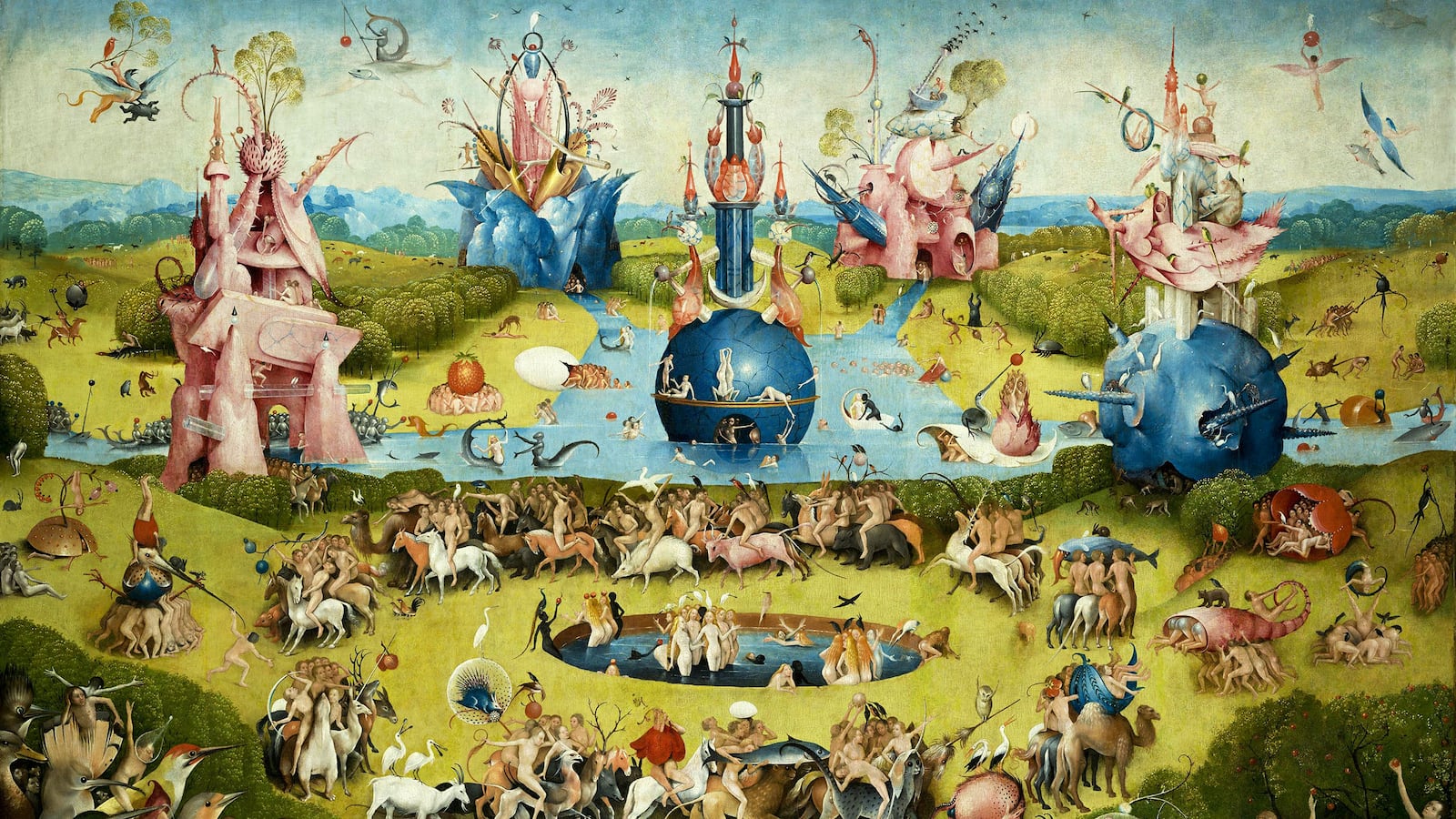In 1971, Manuel Elizalde, a government official in the Philippines and crony of Ferdinand and Immelda Marcos, announced the discovery of a previously lost “stone age tribe” of indigenous people on the island of Mindanao. Known as the Tasaday, the tribe became overnight celebrities, especially when it was revealed that they didn’t even have a word for “war” and were pacifist cave dwellers. They became the poster children for railing against the decadence of modern civilization.
As it turned out, however, the Tasaday were a hoax. Linguists first became suspicious when it emerged that this group of supposed cave dwellers had a word for “roof.” Then, in 1986, a Swiss reporter discovered that the Tasaday weren’t living “like our ancestors” at all, but rather in typical houses in which they dressed in blue jeans and T-Shirts. Elizalde had convinced some members of local tribes to pretend to belong to the tribe in exchange for money. The villagers never saw any support and in the early 1980s Elizalde fled with (reportedly) $35 million of funds ear-marked for minority groups and a harem of teenage girls. Recent anthropological work has suggested that while some of the local tribes in the region were more isolated than others, there was no “stone age” group that was untouched by the modern world.
In the past three hundred years, as the British, the Dutch, the Spanish, the Portuguese, and others trawled the globe colonizing the world and exploring areas that were previously unknown (to them), they have often discovered groups of people who seem to them to be a throwback to the prehistoric world. While the majority of European propaganda caricatures foreign groups as dangerous savages to be subjugated, they were also described as “pristine tribes” as noble, simple, fierce, spiritual, and somehow more authentically human than those of us corrupted by “civilization.”
The idea of a group of people untouched and unblemished by modernity encouraged social scientists to see them as a control group when it came to asking questions about whether humans have an original nature that has been somehow sullied by civilization. Among the most popular questions are ones about the human capacity for violence and war. Are people inherently violent or was the slow march away from hunting and gathering that left us war-mongering and conflict-ridden?
In 2013, controversial anthropologist Napoleon Chagnon published his book Noble Savages: My Life among Two Dangerous Tribes – The Yanomamö and the Anthropologists. In it, Chagnon presents the Yanomano of the northern Amazonia as a “fierce” tribe of war-mongering people who engage in raids in order to maximize access to women, gain recognition, and take revenge (usually for the death of a member of their group). His essential argument, now being marketed by popular psychologist Steven Pinker, is that men are driven to fight because of reproductive competition. Throughout his work Chagnon presents the Yanomamo as typical stone-age warriors, untouched by the influence of later cultural developments. He writes, for example, that “the Yanomamo are probably a typical example of what life is like in a state of nature” and that “we might want to consider this possibility as we learn more about the nature of human life in a ‘state of nature.’”
Since the publication of his work, many scholars have criticized Chagnon’s findings and methodology. In some cases his work seems to have incited violence, Chagnon was collecting genealogical information, but had to get around the Yanomamo taboo about speaking the names of the dead. The way he did that was to say, “Hey, you won’t tell me the name of your grandfather, but that guy did. Why don’t you tell me the name of his grandfather?” The situation quickly turned violent. As Jon Marks, Professor of anthropology at UNC-Charlotte, and is critical of racist impulses in the field told me, “since Chagnon had gifted machetes to them and encouraged them to violate their taboos about naming dead relatives, it might not be terribly surprising that they turned out so fierce so quickly.”
Of particular import in the controversy is Rutgers professor Brian Ferguson’s 1995 book Yanomami Warfare, which details the impact of the lengthy relationship between the Yanomamo from the days of the slave trade onwards. Ferguson, who serves as Director of Graduate Peace and Conflict Studies at Rutgers-Newark, demonstrates that warfare and living patterns among the Yanomamo were deeply affected by the influx in foreign goods and the introduction of more efficient weapons like machetes (which they were naturally keen to acquire in the 1960s). When Chagnon arrived the people were in a mode of conflict that could be traced back to the 1930s, if not the 17th century. As Ferguson puts it in a 2015 article for Anthropological Theory, “Yanomami are not naturally warlike. In some places and times, they became that way. Neither does war spring out of human DNA. War is a cultural and historical variable. It is also one of the greatest curses to afflict humanity.”
A very different characterization of “pristine peoples” emerged in anthropological studies in the Kalahari. The San people (sometimes known as the “Bushmen”) burst into international consciousness in 1958, when South African author Laurens van der Post published a book about his search for The Lost World of the Kalahari. Van der Post had a lifelong fascination with “vanished tribes” and presented the San in a deeply paternalistic fashion. He portrayed them as simple-minded “children of nature” and “mystical ecologists.” Van der Post isn’t the first, the cultural idea of the noble savage goes back at least as far as the philosophers Montaigne and Rousseau, who thought that the nature-synced noble savage stood in direct opposition to the distorted decadence of the man of culture.
Even though work of van der Post has largely been discredited (he based one of his later works on deeply colonialist turn of the twentieth century “manuals”), his legacy lives on in the torrent of documentaries and films produced since. They enjoyed renewed global fame in 1980 when the comedy The Gods Must be Crazy opened with a scene of the San people encountering a Coca-Cola bottle (something that led Coca-Cola to sponsor a documentary about them in 2000).
The allure of the San people is the commonly held idea that they had lived in the desert, in isolation from the trappings of modern society, preserving the traditions, genetics, and lifestyle of those who lived ten thousands of years before them. Their isolation from the corrupting forces of “civilized society” has contributed to the spread of some misconceptions about them: they are childlike in some portraits, spiritual proto-eco-warriors in others. Popular singer Dave Matthews, who composed a song based on the music of the San people, once described them in an interview as “the most advanced people on the planet.”
The idealization of the untouched, pristine tribe has its roots, in part, in the Biblical creation stories. In Genesis, Adam and Eve lived an idyllic life in the Garden of Eden on a diet of tropical fruit, alongside their animal neighbors. It was only with the ingestion of the fruit of the tree of knowledge of good and evil that they realized they were naked and were ejected from paradise. In religious terms The Fall necessitated the development of agricultural techniques, learning, building projects, and so forth. Later interpretations of the story present even the finest trappings of civilization (metallurgy, education, medicine) as the gifts of morally compromised angels. Ideally, we’d still be back in the Garden. As a result, when Europeans aren’t caricaturing pristine groups as barbaric cannibals, we tend to portray them as simplistic children. And like children, we sometimes see them as preserving an innocence and knowledge that has been lost by adults.
(The influence of the Adam and Eve story was so acute that, in the 19th century there really was a scholarly debate about whether hunter-gatherers were primordial or degenerate. After all, Adam and Eve were horticulturalists; because the Bronze Age authors could not even conceptualize a pre-agricultural world. Thus, foragers had to be degenerate descendants of farmers.)
Today the romance of the forgotten tribe can be especially appealing to those advocating for greater environmental awareness and cultural sensitivity. In 2011, for example, National Geographic ran a story about the “last” uncontacted tribe in the world, which was under threat from logging. The needs are, of course, real, but the traditional story of how shifts in human social patterns affected the ecosystems around them may miss some key information. An interesting way to look at the idea of pristine tribes and the effects of civilization on these groups is to examine what happens once contact is established with a previously-isolated group. Would this group become dependent vassals of “more advanced” societies?
Anthropologist Helga Vierich, a professor at The Yellowhead Tribal College in Alberta, spent many years in the field studying the Kua people (a group of hunter-gatherers who self-identify as Bushmen) in the Kalahari. The Kua had been in contact with Bantu-speaking farmer-herder people for some five hundred years. When she went into the Kalahari to discover if these groups had been subjugated by their neighbors she discovered that they had remained hunter-gatherers. Seasonally, Kua people would work payment jobs in the Bantu economy, but it wasn’t economic opportunity but a tradition of gathering at springs in the fossil river valley that had brought the Kua there. These gatherings, she learned, were opportunities for the Kua to gather and ally themselves with other Kalahari hunter-gatherers. These groups identify with one another, in part, because of their attitudes towards animal and plant life and their shared practice of re-planting useful wild food. What we might call “planting” they called giving back to the mother.
What Vierich’s other work with small-scale subsistence farming and herding communities in Burkina Faso revealed was that people in these smaller communities tended to see one another through tough times, be that drought, illness, or old age. She suggests that hunter-gatherer communities were replaced by farmers because they were more efficient at collecting and storing resources, but that forager communities like the Kua can exist in a mutually beneficial relationship with farming groups. The real risk to these communities is not farming in general, but exploitative, “efficient,” slash-and-burn farming, that will harm the larger eco-system of the Kalahari that actually depends on the role of human beings.
In an excerpt from a forthcoming paper that Vierich shared with The Daily Beast, she said, "We also need not romanticize the hunter-gatherers, or beat our chests that the domestication of plants and animals led to the biggest mistake in the history of the human race... humans are not a plague species wrecking ecosystems wherever we go on this earth. We are not rotten, we do not deserve extinction, and we are not evil. The fate of our species is not sealed by anything particularly rapacious in our human nature."
The mischaracterization of the untouched tribe doesn’t solve the debate about whether or not civilization is bad, but it has proved to be an enduring moneymaker for those able to monetize stone-age wisdom. A number of pharmaceutical companies tried to harness the San people’s use of the plant Hoodia gordonii in slimming aids. And I hardly need mention the popular appeal of the paleo-diet. If there’s a “natural” constant here, it’s the pervasive appeal that the “noble savage” holds for the civilized consumer.






